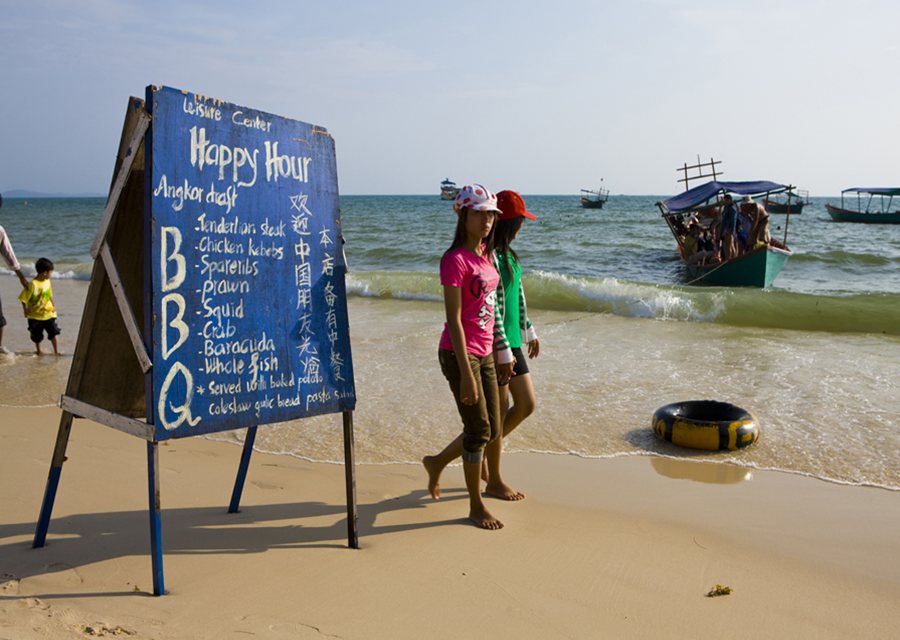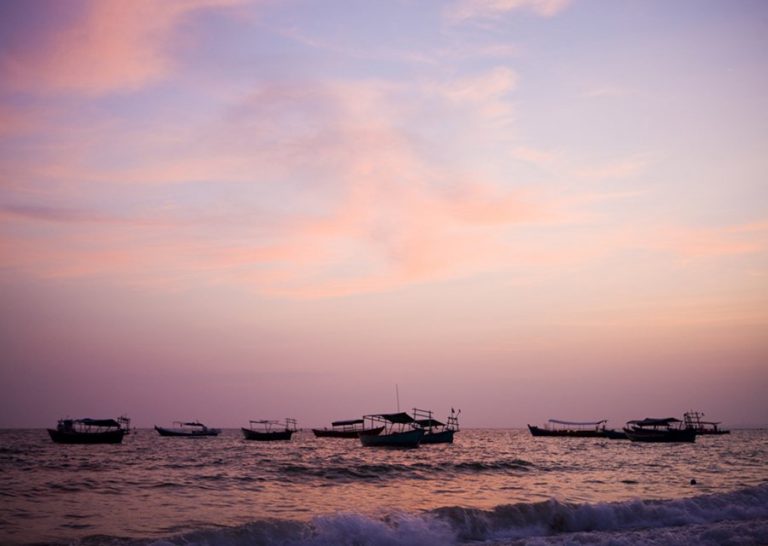Following years of neglect and isolation when it was practically cut off from the rest of the country due to security issues in the hinterland, the Cambodian coast has been rapidly developed as a tourist destination over the past few years.
Foreign investors have joined local businessmen in developing hotels, resorts and better-quality restaurants. To be sure, there is some way to go – but for the people of Phnom Penh and for foreign travellers, trips to the coast and long hours of swimming and sunbathing by the Gulf of Thailand are back in vogue.
The coast features palm-fringed beaches, a scattering of resorts and some beautiful offshore islands. A short distance inland are a series of national parks and some impressive mountain scenery.


Places to visit around the Cambodian Coast
Kampot
Kampot, the capital of the eponymous province, is a small, relaxed town of around 33,000 people. Just 5km (3 miles) inland, by the banks of the Sanke River, there is a coastal feel to the place which adds to its rather languid appeal.
A series of narrow, colonnaded streets lead west from the main central roundabout to the riverfront. Although in need of restoration, there are some fine examples of French and Chinese architecture to be seen in this warren, as well as the best of Kampot’s restaurants. There are some particularly handsome colonial buildings in this area, notably the Governor’s Residence and the main post office at the southern end of the riverfront. Fishing boats cluster on the far side of the Sanke River.
Bokor National Park
The Chuor Phnom Damrei, a wild region of wildlife-rich forests and sheer rock outcrops about 40km (25 miles) northwest of Kampot. Part of the range is protected by the Bokor National Park, within which is the 1,079-metre (3,506ft) high former hill station of Bokor. Often shrouded in mist, the hill resort was built by the French in the early 1920s, but later fell on hard times under the Communist guerrillas and the Khmer Rouge. The hillsides still harbour the danger of landmines, so visitors should keep to the tracks.
The ruins of the old hill station include the Black Palace complex, King Sihanouk’s former retreat, and the huge Bokor Palace Hotel, which included a casino as well as a small church.
There has been only modest encroachment by development and Bokor (and the other southern parks Kirirom and Ream) is a treasure trove of endangered species. Tigers, elephants, gaur, leopards and langurs are found in the jungles.
Sihanoukville
Once a holiday haven for the rich, these days Sihanoukville is packed at weekends with visitors from the capital. As the country’s third-most-visited tourist destination, it is seeing a steadily increasing number of foreign visitors, and can be crowded during the dry season. There are numerous hotels and guesthouses of all classes, with many run by expatriate Westerners. Sihanoukville’s restaurants offer a wide choice of cuisines, and seafood is fresh and plentiful.
The main activities are, as one might suspect, sunbathing and swimming. There’s also good snorkelling and fishing, while diving trips are available with experienced dive instructors. In all, Sihanoukville has about 10km (6 miles) of beachfront, divided into four main beaches. The nightlife here is the liveliest in the country.
Koh Kong
Koh Kong – confusingly the name of the province, the provincial capital and an offshore island – is a fast-developing island resort, a beautiful tropical backwater which is establishing itself as a leading ecotourism centre: the nearby Koh Kong Conservation Corridor encompasses the Cardamom Mountains, Peam Krasaop Wildlife Sanctuary, Koh Por and Tatai waterfalls, Koh Kong Island, Southern and Central Cardamoms Protected Forests, and a portion of Botum Sakor National Park. All of these sights present endless outdoor activities and opportunities to see endangered species.
Source: insightguides



Comments